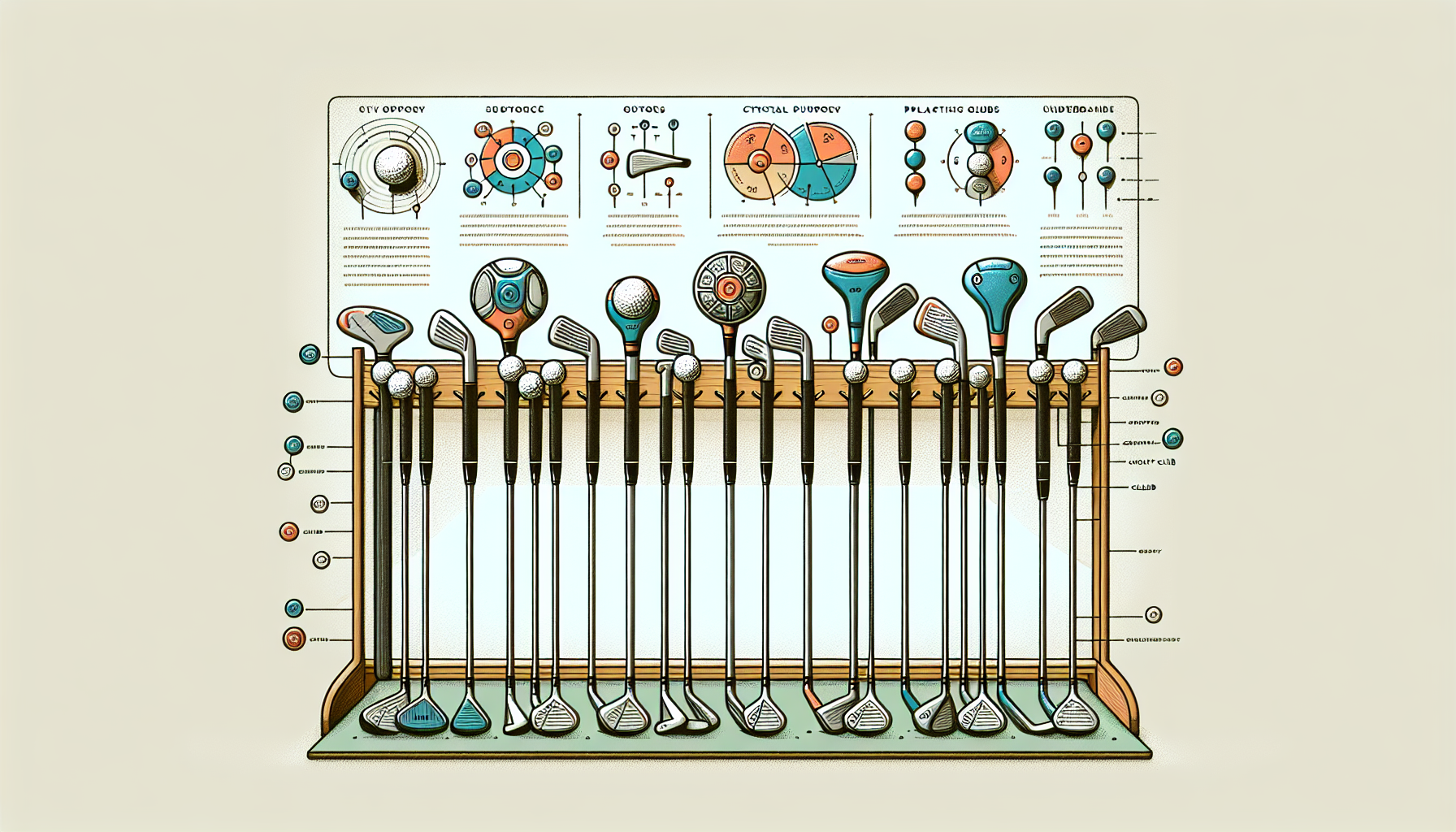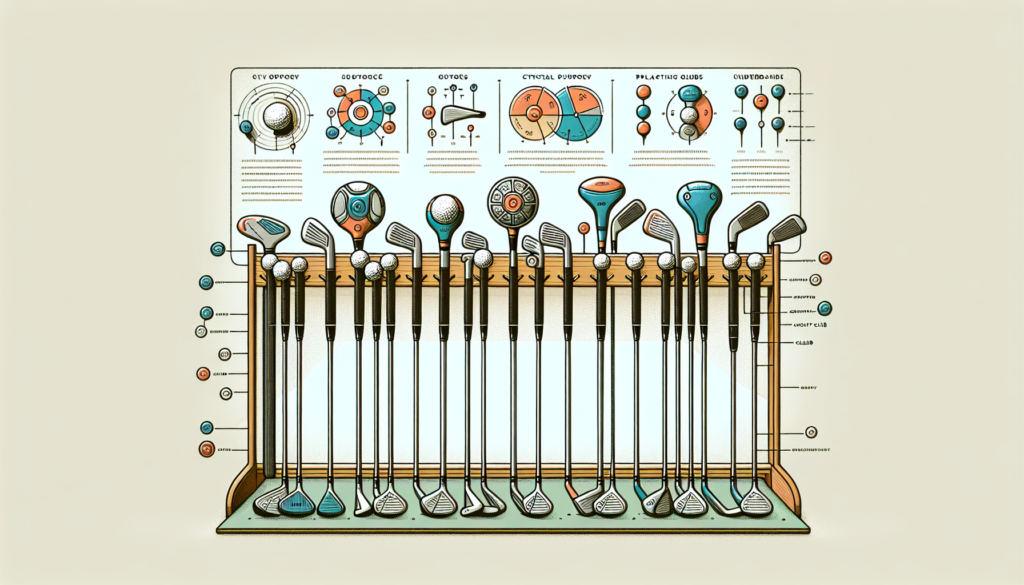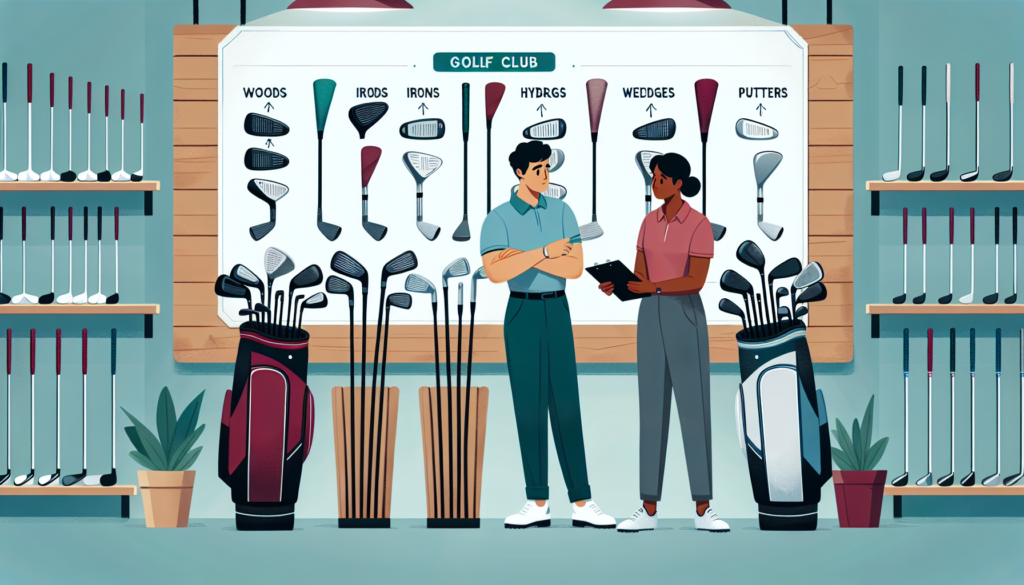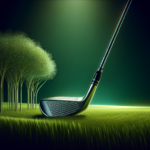
In the world of golf, choosing the right set of clubs is a crucial decision that can greatly impact your game. With a myriad of options available in the market, one might find themselves overwhelmed and unsure of where to begin. When it comes to selecting golf clubs, understanding your skill level, swing characteristics, and personal preferences is paramount. In this article, we will guide you through the process of confidently figuring out which golf clubs are best suited for you, ultimately elevating your performance on the course.
Understanding Golf Clubs
Golf clubs are essential tools used in the game of golf. They are designed to hit the ball and allow players to achieve maximum distance and accuracy. Understanding the different types of golf clubs, their components, and the importance of club fitting is crucial for any golfer, whether they are a beginner or an experienced player.
Different Types of Golf Clubs
There are several types of golf clubs, each designed for specific shots and situations on the golf course. The main types of golf clubs include drivers, fairway woods, hybrids, irons, wedges, and putters.
Components of a Golf Club
A golf club consists of several components that determine its performance characteristics. These components include the head, shaft, grip, and customization options. Understanding each component and its impact on the club’s performance is key to choosing the right golf club for your game.
Importance of Club Fitting
Club fitting is the process of customizing golf clubs to match a player’s unique swing characteristics and physical attributes. It involves analyzing factors such as club length, loft, lie angle, shaft flex, and grip size, among others. Club fitting ensures that the golfer’s equipment is optimized for their swing, resulting in improved performance and consistency.
Considerations for Beginners
For beginners, choosing the right golf clubs can be overwhelming. It is essential to consider factors such as golfing goals, frequency of play, budget, and seeking expert advice. With the right set of golf clubs, beginners can start their golfing journey on the right foot and enjoy the game to its fullest potential.
Types of Golf Clubs
Drivers
Drivers, also known as 1-woods, are designed to hit the ball the farthest off the tee. They have the largest heads and the lowest lofts among all the golf clubs. Drivers provide golfers with maximum distance and are often used on par-4 and par-5 holes.
Fairway Woods
Fairway woods are designed for shots from the fairway or rough. They have slightly smaller heads than drivers and are available in various lofts. Fairway woods offer versatility and are often used for long shots when the ball needs to travel a significant distance.
Hybrids
Hybrids, also known as rescue clubs, are a combination of irons and fairway woods. They are designed to replace long irons and provide forgiving shots from various lies. Hybrids are easier to hit than traditional long irons and offer better distance and accuracy for players of all skill levels.
Irons
Irons are the most versatile clubs in a golfer’s bag. They are used for shots from the fairway, rough, and around the green. Irons are available in a set of various numbers, ranging from 3 to 9, including pitching and sand wedges. Each iron has a different loft, which determines the distance the ball will travel.
Wedges
Wedges are used for shots around the green, such as bunker shots, pitch shots, and chip shots. They have higher lofts than irons and provide players with more control and precision. Wedges come in different types, including pitching, gap, sand, and lob wedges, each designed for specific situations on the golf course.
Putters
Putters are essential for the final shots on the green. They are used to roll the ball into the hole and require a smooth and controlled stroke. Putters come in various designs, including blade, mallet, and counterbalanced putters, each offering different alignment aids and feel.

Choosing the Right Driver
Head Size and Loft
When choosing a driver, the head size and loft are crucial factors to consider. Larger heads provide more forgiveness and a larger sweet spot, while smaller heads offer increased workability. The loft angle of the driver determines the trajectory and distance of the ball, with higher lofts providing more loft and lower lofts producing a lower ball flight.
Shaft Flex
The shaft flex of a driver determines how much the shaft bends during the swing. It affects the trajectory and accuracy of the shots. Players with slower swing speeds generally benefit from a more flexible shaft, while players with faster swing speeds may require a stiffer shaft for better control.
Customization Options
Many drivers offer customization options such as adjustable loft and lie angles, movable weights, and adjustable hosels. These features allow golfers to fine-tune their drivers and optimize their performance based on their swing characteristics and shot preferences.
Testing and Trial
Before purchasing a driver, it is essential to test and trial different options. Golfers should visit a reputable golf shop or driving range that offers club fitting services. Testing different drivers allows golfers to assess the feel, sound, and performance of each club, aiding in the decision-making process.
Selecting Fairway Woods
Loft and Distance
The loft of fairway woods determines the trajectory and distance of the shots. Higher lofted fairway woods produce higher shots with more spin, while lower lofted fairway woods create a flatter trajectory with less spin. Golfers should consider their desired distance and trajectory when selecting fairway woods.
Clubface Material
Fairway woods can have clubfaces made of different materials such as titanium, steel, or composite materials. Each material offers unique characteristics in terms of forgiveness, distance, and feel. Golfers should try different materials to find the one that suits their preferences and playing style.
Shaft Selection
Choosing the right shaft for fairway woods is essential for maximizing performance. The shaft flex, weight, and material impact the feel and control of the club. Golfers with slower swing speeds may benefit from a more flexible shaft, while those with faster swing speeds may require a stiffer shaft for better control.
Clubhead Design
Fairway woods come in different clubhead designs, including shallow-faced, deep-faced, and adjustable options. Shallow-faced fairway woods offer more forgiveness and easier launch, while deep-faced fairway woods provide better control and workability. Adjustable fairway woods allow golfers to fine-tune the loft and lie angles for optimized performance.

Opting for Hybrid Clubs
Benefits of Hybrids
Hybrid clubs offer several advantages for golfers of all skill levels. They are easier to hit than long irons, providing forgiveness and higher launch angles. Hybrids also offer better distance and accuracy compared to traditional long irons, making them a popular choice for players looking to improve their game.
Replaceability of Long Irons
Hybrids are designed to replace long irons, such as the 3-iron and 4-iron. Long irons are typically more challenging to hit consistently, especially for golfers with slower swing speeds. By opting for hybrids, golfers can benefit from increased forgiveness and playability, resulting in better performance on the course.
Determining Loft and Distance Gaps
When choosing hybrid clubs, it is crucial to consider the loft and distance gaps between the hybrids and other clubs in the bag. Hybrids should be selected to fill the distance void between fairway woods and irons, ensuring smooth transitions and adequate coverage for all types of shots on the golf course.
Shaft Characteristics
The shaft characteristics of hybrid clubs, such as flex, weight, and material, can significantly impact the performance of the club. Golfers should consider their swing speed and preferences when selecting hybrid shafts. A correctly fitted shaft can enhance distance, accuracy, and control, improving overall performance.
Understanding Irons
Cavity Back vs. Muscle Back
Irons come in two main design styles: cavity back and muscle back. Cavity back irons have a larger cavity behind the face, which provides increased forgiveness and a larger sweet spot. Muscle back irons, also known as blades, have a more traditional design with a full back and provide better workability and shot shaping capabilities.
Forgiveness and Playability
Irons vary in terms of forgiveness and playability. Forgiving irons have larger sweet spots and offer consistent distance and accuracy, making them suitable for players who prioritize forgiveness. Playable irons have smaller sweet spots and offer better workability and control, catering to players who prefer shot shaping and shotmaking capabilities.
Shaft Material and Flex
The shaft material and flex of irons can impact the feel, control, and distance of the shots. Steel shafts are common in irons and provide a solid feel and control. Graphite shafts are lighter and offer more flex, beneficial for players with slower swing speeds. The shaft flex should be selected according to the player’s swing characteristics and distance goals.
Considerations for Game Improvement
Game improvement irons are designed to help golfers improve their performance and consistency. They often feature larger clubheads, wider soles, and more forgiving designs. Golfers seeking to improve their game should consider game improvement irons for enhanced distance, accuracy, and forgiveness.
Choosing the Right Wedges
Types of Wedges
There are various types of wedges designed for different shots around the green. Pitching wedges have the lowest loft and are commonly included in iron sets. Gap wedges bridge the gap between pitching and sand wedges, offering versatility and options for specific distance shots. Sand wedges have higher lofts and are designed for shots out of bunkers. Lob wedges have the highest lofts and are used for high shots with little roll.
Bounce Angle
The bounce angle of a wedge determines how the club interacts with the turf. Higher bounce angles offer more forgiveness and prevent the club from digging into the ground, suitable for soft or fluffy lies. Lower bounce angles perform better on firm turf and allow golfers to hit shots with less digging.
Grind Options
Wedge grinds refer to the shaping and design of the sole of the club. Different grinds provide different levels of versatility, allowing golfers to hit a variety of shots. Grinds such as the full sole, mid sole, and low sole provide different bounce angles and relief for particular shot requirements, such as bunker shots or full swings from different lies.
Determining Loft Combinations
When selecting wedges, it is essential to consider the loft combinations that best suit your game. The loft gaps between wedges should be consistent, allowing for smooth yardage transitions. Golfers should analyze their typical approach distances and desired shot trajectories to determine the ideal loft combinations for their wedge setup.
Selecting the Perfect Putter
Putter Types
Putters come in various types, each offering unique characteristics and benefits. Blade putters have a traditional design with a thin, flat clubhead. Mallet putters have larger, more forgiving clubheads with increased alignment aids. Counterbalanced putters feature additional weight in the grip and offer better stability for golfers with a tendency to have wrist breakdowns during the stroke.
Putter Length
The length of a putter is an essential factor to consider. The correct length ensures the golfer is in the optimal position for a consistent and repetitive stroke. Golfers should experiment with different putter lengths to find the one that allows for a comfortable setup with proper eye alignment over the ball.
Putter Head Shape
The shape of the putter head can significantly impact a golfer’s stroke and alignment. Different putter head shapes, such as heel-toe weighted, face-balanced, or toe-hang designs, offer varying degrees of forgiveness and stability. Golfers should choose a putter head shape that suits their stroke type and provides confidence at address.
Alignment Aids and Feel
Putters often feature alignment aids, such as lines or dots on the clubhead, to assist golfers in aligning the ball properly. Finding a putter with alignment aids that match a golfer’s visual preferences can improve alignment consistency. Additionally, putter feel is subjective and varies among players, so finding a putter with the desired feel is essential for optimal performance.
The Importance of Club Fitting
Benefits of Club Fitting
Club fitting is essential for golfers of all skill levels and can have a significant impact on performance. Customized golf clubs can improve distance, accuracy, and consistency. Properly fitted clubs ensure that the golfer’s swing characteristics and physical attributes are optimized, resulting in better ball flight and shot control.
Professional vs. Advanced Fitting
Club fitting can be done through professional fitting sessions with certified club fitters or advanced fitting technologies. Professional club fitters have in-depth knowledge of golf equipment and swing analysis, providing personalized recommendations. Advanced fitting technologies, such as launch monitors and fitting systems, offer data-driven insights into a golfer’s swing characteristics and equipment needs.
Factors Considered in Club Fitting
Club fitters consider several factors when fitting golf clubs, including swing speed, ball flight tendencies, launch angle, spin rate, shaft characteristics, and grip size. They analyze the golfer’s swing and ball data to recommend the best combination of club specifications that optimize distance, accuracy, and consistency.
Effect on Performance and Consistency
Club fitting ensures that golfers are using clubs with the appropriate length, lie angle, loft, shaft flex, and grip size. Properly fitted clubs allow golfers to achieve an optimal swing path, resulting in improved performance and consistency on the golf course. Customized golf clubs can enhance ball flight, accuracy, and overall enjoyment of the game.
Considerations for Beginners
Golfing Goals and Frequency
Beginners should consider their golfing goals and frequency of play when choosing golf clubs. If they plan to play frequently and have aspirations for improvement, investing in a quality set of golf clubs can provide a solid foundation. However, if they are unsure about their commitment to the game, a more budget-friendly option may be suitable.
Budget Considerations
Golf clubs can range significantly in price, and beginners should establish a budget before making a purchase. It is important to strike a balance between quality and affordability. While more expensive clubs may offer advanced technology and performance benefits, budget-friendly options can still provide a satisfactory playing experience for beginners.
Club Set Options
Beginners often have the option of purchasing complete club sets, which include a full range of clubs to cover all types of shots on the golf course. These sets typically include a driver, fairway woods, irons, wedges, and a putter. Complete club sets provide convenience and ensure that beginners have all the necessary clubs to start playing immediately.
Seeking Expert Advice
For beginners, seeking expert advice can be beneficial in making the right choice of golf clubs. Golf professionals or club fitters can provide valuable insights and recommendations based on a beginner’s skill level, swing characteristics, and goals. Their expertise can help beginners navigate through the vast array of options and make an informed decision.
In conclusion, understanding the different types of golf clubs, their components, and the importance of club fitting is crucial for any golfer. By knowing the characteristics and purpose of each type of golf club, golfers can make informed decisions when selecting the right equipment for their game. Considering factors such as head size, loft, shaft flex, customization options, and seeking professional advice can greatly enhance a golfer’s performance, consistency, and overall enjoyment of the game. Whether you are a beginner or an experienced player, investing time and effort in understanding and choosing the right golf clubs can significantly impact your success on the golf course.





